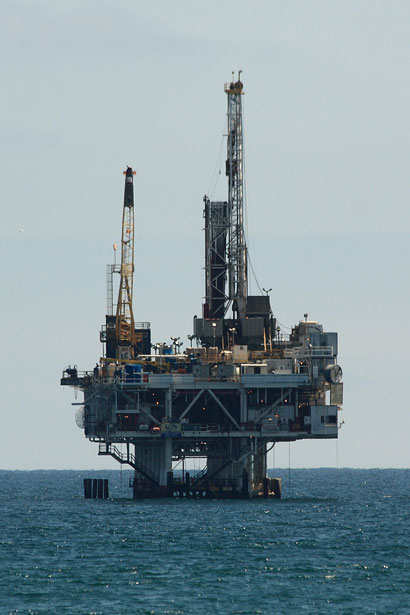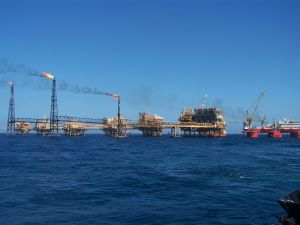The San Francisco toxic tort law firm at The Brod Law Firm continues to follow the legal battles that have grown out of the 2010 oil spill in the Gulf of Mexico. We follow the developments because we want to be prepared to help victims should an oil spill in Sacramento or other Northern California oil and gas accidents result in harm to our community.
 As the Associated Press reported, last Wednesday, BP and a team of plaintiffs’ attorneys presented judge overseeing the BP cases with the formal terms of a proposed settlement for the pending class-action claims. The lawyers are looking for the judge to issue a preliminary approval that would impact BP and a plaintiff-side class composed of more than 100,000 businesses and individuals. There is no indication of how long it will take the judge to reach a ruling. Judge Barbier is expected to hold a formal fairness hearing to evaluate the settlement prior to issuing a final approval.
As the Associated Press reported, last Wednesday, BP and a team of plaintiffs’ attorneys presented judge overseeing the BP cases with the formal terms of a proposed settlement for the pending class-action claims. The lawyers are looking for the judge to issue a preliminary approval that would impact BP and a plaintiff-side class composed of more than 100,000 businesses and individuals. There is no indication of how long it will take the judge to reach a ruling. Judge Barbier is expected to hold a formal fairness hearing to evaluate the settlement prior to issuing a final approval.
The proposed settlement would have BP paying an estimated $7.8 billion to resolve claims from private parties. Settlement papers put no cap on the total damages that BP may have to pay. If approved, it would be one of the largest class-action settlements in history. The parties believe the settlement is reasonable, fair, and adequate and that it builds a comprehensive system for awarding compensation to class members.
 San Francisco Injury Lawyer Blog
San Francisco Injury Lawyer Blog


 In November 2011, a drilling accident led to an oil spill at Chevron’s Frade field. The Frade site is a deep water field in the Atlantic Ocean off the coast of Rio de Janeiro. It is estimated that three thousand barrels of crude oil flowed into the water as a result of the Frade incident. According to allegations, the companies involved in the Frade project used faulty equipment, applied excessive drilling pressure, and failed to fulfill requirements aimed at preventing oil spills.
In November 2011, a drilling accident led to an oil spill at Chevron’s Frade field. The Frade site is a deep water field in the Atlantic Ocean off the coast of Rio de Janeiro. It is estimated that three thousand barrels of crude oil flowed into the water as a result of the Frade incident. According to allegations, the companies involved in the Frade project used faulty equipment, applied excessive drilling pressure, and failed to fulfill requirements aimed at preventing oil spills. A class action lawsuit is a type of litigation where a large number of people with a common interest in a matter sue or are sued as a group. This type of legal action provides a convenient way to resolve disputes between large numbers of individuals with similar interests in one case.
A class action lawsuit is a type of litigation where a large number of people with a common interest in a matter sue or are sued as a group. This type of legal action provides a convenient way to resolve disputes between large numbers of individuals with similar interests in one case.  On September 9, 2010, a pipeline explosion occurred near Skyline Boulevard and San Bruno Avenue in San Bruno’s Crestmoor neighborhood. The explosion and resulting fire left eight people dead, completely destroying thirty-eight homes and damages many more properties. Pacific Gas and Electric (“PG&E”), the company responsible for operating the pipeline, dismissed allegations that the pipeline was being operated at an elevated, dangerous, and illegal level of pressure. The current Chronicle investigation revealed that at least three segments in the San Bruno natural gas pipeline were being operated at an illegally high pressure level.
On September 9, 2010, a pipeline explosion occurred near Skyline Boulevard and San Bruno Avenue in San Bruno’s Crestmoor neighborhood. The explosion and resulting fire left eight people dead, completely destroying thirty-eight homes and damages many more properties. Pacific Gas and Electric (“PG&E”), the company responsible for operating the pipeline, dismissed allegations that the pipeline was being operated at an elevated, dangerous, and illegal level of pressure. The current Chronicle investigation revealed that at least three segments in the San Bruno natural gas pipeline were being operated at an illegally high pressure level. The most likely reason to bring a class action suit in federal court, instead of state court, is the diversity doctrine. This means that the suit involves at least one plaintiff who is a citizen of a different state than one or more of the defendants. For these purposes, companies are citizens of the state where they have their principle place of business. In order to file as a federal class, the plaintiffs must show four things: 1) Commonality (one or more issues is common to the whole class and, often, these common issues dominate over individual matters); 2) Adequacy (the selected representative can effectively protect the interests of all members of the class); 3) Numerosity (the class is large enough that individual lawsuits are not practical, making a class action a better method for resolving the matters); and 4) Typicality (the claim of the representative stems from a wrong to the class and is typical of the claims of the class members). These requirements aim to make sure that a class action is the best method for resolving a dispute and that a proper lead plaintiff is selected to represent the class in court.
The most likely reason to bring a class action suit in federal court, instead of state court, is the diversity doctrine. This means that the suit involves at least one plaintiff who is a citizen of a different state than one or more of the defendants. For these purposes, companies are citizens of the state where they have their principle place of business. In order to file as a federal class, the plaintiffs must show four things: 1) Commonality (one or more issues is common to the whole class and, often, these common issues dominate over individual matters); 2) Adequacy (the selected representative can effectively protect the interests of all members of the class); 3) Numerosity (the class is large enough that individual lawsuits are not practical, making a class action a better method for resolving the matters); and 4) Typicality (the claim of the representative stems from a wrong to the class and is typical of the claims of the class members). These requirements aim to make sure that a class action is the best method for resolving a dispute and that a proper lead plaintiff is selected to represent the class in court.